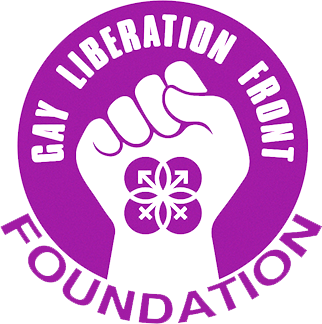Occupation of NYU’s Weinstein Hall
First person account by Ellen Broidy
If you wandered by NYU during the 50th anniversary of Stonewall, you might be lulled into thinking that the university had a long history of support for the LGBTQ+ community and the struggle for gay liberation. Buildings sported rainbow banners and the bookstore had whole sections dedicated to LGBTQ “merch.” Had I not known the problematic history of NYU’s relationship to our movement, I would have felt an enormous sense of pride in my alma mater.
The flags and merch, however, obscured the true story of the relationship between the university and the LGBTQ+ community, a story that involved insensitivity, bias, and the New York City Police Department. And while the university eventually acknowledged its missteps, the casual observer would have no sense of what happened in the summer of 1970 and indirectly led to NYU coming to terms with its treatment of our community.
In June 1970, the Gay Activist Alliance, a group with roots in the Gay Liberation Front, signed a contract to host a dance in the basement of Weinstein Hall, an undergraduate dorm on University Place. The dance was so successful that the Christopher Street Liberation Day Committee contracted with the Weinstein student organization to hold three additional dances throughout the summer. The first CSLDC was also incident-free (although it took the intercession of a New York Civil Liberties attorney to convince the school administration to honor the contract). Anticipating a problem, the dance organizers approached the NYU Gay Student Liberation group to co-sponsor to deflect criticism that the event was not endorsed by an “official” campus organization.
As president of NYU Gay Students Liberation, I signed the group on as a co-sponsor. Then, the university administration balked and immediately closed all campus facilities to gay social functions until, as we were informed, they could convene a panel of psychologists and ministers to assess the damage the presence of queer people in the Weinstein basement might cause impressionable undergrads. After a demonstration in front of the dorm, the university permitted a small dance party to take place on the evening of August 28 but retained the ban on LGBTQ social functions on NYU property.
On September 20, 1970, in direct response to the ban, members of NYU Gay Students Liberation occupied the Weinstein basement. While the students, joined by some community supporters, were holding down the basement, I walked uptown to the Gay Liberation Front Sunday meeting at Church of the Holy Apostles to urge my GLF sisters and brothers to abandon the meeting and join us. Eager to act, dozens of GLF’ers accompanied me back to Weinstein, collecting more supporters along the way. Among those who joined us as we headed back to the dorm were Sylvia Riviera, Marsha P. Johnson, and some their friends and comrades. Marsha and Sylvia remained steadfast participants in the occupation until the very end and used their time there both to interact with the students and to lay the foundation for their groundbreaking organization STAR, Street Transvestites Action Revolutionaries.
While the occupation outraged university administration, the undergraduate residents of Weinstein were enthralled. For many of them, this action became a defining moment of their college experience and they eagerly lined up to use the pay phones in the hall to report back home on the exciting events transpiring in their dorm.
The Gay Liberation Front did not just occupy the space, they turned the occupation into a teachable moment by holding impromptu workshops on liberation, gay and otherwise, engaging constructively with students who thought this was a thrilling way to start their college careers, and encouraging everyone to question authority. GLF member Martha Shelly took the opportunity to teach in a different way by sharing copies of COME OUT, the GLF newspaper, with the students. Frustrated by our defiance (and stunned by the student support for our action), campus officials summoned the dreaded Tactical Police Force to eject us from the building.
On September 28, confronted by heavily armed riot police, we had little choice but to disperse. But we left our mark and 53 years after the fact, NYU is considering placing a plaque on the dorm commemorating our community’s show of strength and defiance.
